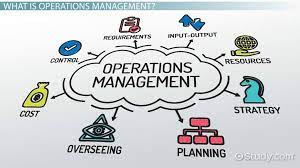Planning Techniques and Tools in Business Decision Making
In the fast-paced and dynamic world of business, making effective decisions is crucial for success. Whether it’s launching a new product, expanding into new markets, or optimizing internal processes, decision making plays a pivotal role in achieving organizational goals. To ensure that decisions are well-informed and strategic, businesses rely on various planning techniques and tools. Let’s explore some of these essential techniques and tools that aid in business decision making.
SWOT Analysis:
One of the most widely used planning techniques is SWOT analysis. It involves assessing the Strengths, Weaknesses, Opportunities, and Threats associated with a particular decision or situation. By identifying internal strengths and weaknesses as well as external opportunities and threats, businesses gain valuable insights to make informed decisions. SWOT analysis helps businesses understand their competitive advantage, potential risks, and areas for improvement.
Decision Trees:
Decision trees are visual representations of decision-making scenarios. They provide a systematic approach to evaluate different choices and their potential outcomes. Decision trees allow businesses to consider multiple factors such as costs, risks, benefits, and probabilities when making complex decisions. By mapping out different paths and their respective consequences, decision trees help businesses assess the potential outcomes of each choice before committing to a specific course of action.
Cost-Benefit Analysis:
Cost-benefit analysis is a technique used to assess the financial implications of a decision by comparing its costs against its anticipated benefits. This tool helps businesses determine whether the benefits outweigh the costs or vice versa. By quantifying both tangible and intangible factors such as increased revenue, reduced costs, improved customer satisfaction, or enhanced brand reputation, cost-benefit analysis provides a clear understanding of the potential return on investment (ROI) for a specific decision.
Scenario Planning:
Scenario planning involves creating multiple plausible future scenarios based on different assumptions about market conditions or other relevant variables. This technique helps businesses anticipate and plan for various potential outcomes, reducing uncertainty and enabling proactive decision making. By considering a range of scenarios, businesses can identify potential risks, opportunities, and necessary adaptations to ensure resilience in an ever-changing business environment.
Project Management Tools:
Effective project management is vital for successful decision making in business. Utilizing project management tools such as Gantt charts, Kanban boards, or critical path analysis enables businesses to plan, track progress, allocate resources efficiently, and manage risks associated with decision implementation. These tools provide clarity on timelines, dependencies, and resource allocation, helping businesses make informed decisions about project prioritization and resource allocation.
Data Analytics:
In today’s data-driven world, leveraging data analytics tools and techniques is crucial for informed decision making. Businesses can gather and analyze vast amounts of data from various sources to gain insights into customer behavior, market trends, operational efficiency, and more. By using data visualization tools or advanced analytics techniques like regression analysis or machine learning algorithms, businesses can uncover patterns and trends that inform strategic decision making.
In conclusion, planning techniques and tools are indispensable in business decision making. From SWOT analysis to decision trees, cost-benefit analysis to scenario planning, project management tools to data analytics – each technique or tool brings a unique perspective to the decision-making process. By employing these methods effectively, businesses can enhance their ability to make well-informed decisions that drive success in today’s competitive landscape.
Demystifying Planning Techniques and Tools in Business Decision-Making: Frequently Asked Questions
- What are those planning tools and techniques?
- What are the tools and techniques in strategic decision-making?
- What are the three planning tools and techniques?
- What is planning techniques and tools in business decision-making?
What are those planning tools and techniques?
There are several planning tools and techniques that businesses commonly use in decision making. Here are some of the most widely used ones:
- SWOT Analysis: SWOT stands for Strengths, Weaknesses, Opportunities, and Threats. This technique helps businesses assess their internal strengths and weaknesses as well as external opportunities and threats, providing a comprehensive understanding of the decision-making context.
- Decision Trees: Decision trees are visual representations of decision-making scenarios. They allow businesses to map out different choices and their potential outcomes, considering factors such as costs, risks, benefits, and probabilities.
- Cost-Benefit Analysis: Cost-benefit analysis involves evaluating the financial implications of a decision by comparing its costs against its anticipated benefits. This tool helps businesses determine whether the benefits outweigh the costs or vice versa.
- Scenario Planning: Scenario planning involves creating multiple plausible future scenarios based on different assumptions about market conditions or other relevant variables. It helps businesses anticipate potential outcomes and plan accordingly to reduce uncertainty.
- Project Management Tools: Various project management tools such as Gantt charts, Kanban boards, or critical path analysis assist in planning, tracking progress, allocating resources efficiently, and managing risks associated with decision implementation.
- Data Analytics: Leveraging data analytics tools and techniques is crucial for informed decision making. Businesses can gather and analyze data from various sources to gain insights into customer behavior, market trends, operational efficiency, and more.
These are just a few examples of planning tools and techniques used in business decision making. The choice of which tool or technique to use depends on the specific context and nature of the decision being made.
What are the tools and techniques in strategic decision-making?
Strategic decision-making is a critical process that shapes the long-term direction and success of an organization. To facilitate this complex process, several tools and techniques are commonly used. Here are some of the key tools and techniques in strategic decision-making:
- SWOT Analysis: SWOT (Strengths, Weaknesses, Opportunities, Threats) analysis helps organizations assess their internal strengths and weaknesses as well as external opportunities and threats. It provides a comprehensive overview of the current situation, enabling strategic decision-makers to identify areas for improvement, exploit opportunities, and mitigate risks.
- PESTEL Analysis: PESTEL (Political, Economic, Sociocultural, Technological, Environmental, Legal) analysis examines the external factors that may impact an organization’s strategy. By analyzing these factors, decision-makers gain insights into potential opportunities or threats arising from the broader business environment.
- Porter’s Five Forces: This framework developed by Michael Porter helps organizations understand the competitive dynamics within their industry. It analyzes five forces: industry rivalry, threat of new entrants, bargaining power of buyers and suppliers, and threat of substitute products or services. By assessing these forces, organizations can make informed decisions regarding market positioning and competitive advantage.
- Scenario Planning: Scenario planning involves creating multiple plausible future scenarios based on different assumptions about market conditions or other relevant variables. This technique helps decision-makers anticipate potential changes or disruptions in the business environment and develop strategies to address them effectively.
- Decision Trees: Decision trees provide a visual representation of decision-making scenarios by mapping out different choices and their potential outcomes. This tool helps decision-makers evaluate various options based on factors such as costs, risks, benefits, probabilities, or desired outcomes.
- Balanced Scorecard: The balanced scorecard is a performance measurement framework that enables organizations to align their strategic objectives with key performance indicators (KPIs). It provides a balanced view across financial perspectives as well as customer satisfaction, internal processes, and learning and growth. By using this tool, decision-makers can monitor progress towards strategic goals and make data-driven decisions.
- Cost-Benefit Analysis: Cost-benefit analysis helps organizations assess the financial implications of a decision by comparing its costs against its anticipated benefits. This technique enables decision-makers to evaluate the potential return on investment (ROI) and make informed choices based on financial considerations.
- Benchmarking: Benchmarking involves comparing an organization’s performance, processes, or practices against industry best practices or competitors. It helps decision-makers identify areas for improvement, set performance targets, and make strategic decisions to enhance competitiveness.
- Data Analytics: Leveraging data analytics tools and techniques allows organizations to gather, analyze, and interpret large amounts of data to gain insights into customer behavior, market trends, operational efficiency, and more. By using advanced analytics methods like regression analysis or machine learning algorithms, decision-makers can make informed decisions based on data-driven insights.
These tools and techniques are not mutually exclusive but rather complement each other in the strategic decision-making process. Organizations often combine multiple tools to gain a comprehensive understanding of their internal capabilities, external environment, and potential future scenarios before making strategic choices that drive long-term success.
What are the three planning tools and techniques?
There are numerous planning tools and techniques available for businesses, but three commonly used ones are:
SWOT Analysis: SWOT stands for Strengths, Weaknesses, Opportunities, and Threats. This technique involves evaluating the internal strengths and weaknesses of a business, as well as the external opportunities and threats it faces. By conducting a SWOT analysis, businesses can gain insights into their competitive advantages, areas for improvement, potential growth opportunities, and potential risks or challenges.
Decision Trees: Decision trees are visual representations of decision-making scenarios. They help businesses evaluate different choices and their potential outcomes by considering various factors such as costs, risks, benefits, and probabilities. Decision trees allow businesses to map out different paths and consequences to assess the potential outcomes of each choice before making a final decision.
3. Cost-Benefit Analysis: Cost-benefit analysis is a technique used to assess the financial implications of a decision by comparing its costs against its anticipated benefits. It involves quantifying both tangible and intangible factors such as increased revenue, reduced costs, improved customer satisfaction, or enhanced brand reputation. By conducting a cost-benefit analysis, businesses can determine whether the benefits outweigh the costs or vice versa, helping them make informed decisions based on potential return on investment (ROI).
What is planning techniques and tools in business decision-making?
Planning techniques and tools in business decision-making refer to the methods and resources used by organizations to facilitate the process of making informed and strategic decisions. These techniques and tools help businesses analyze relevant information, evaluate different options, and consider potential outcomes before committing to a particular course of action. By utilizing these techniques and tools, businesses can enhance their decision-making processes and increase the likelihood of achieving desired outcomes.
Some common planning techniques and tools in business decision-making include:
- SWOT Analysis: This technique involves assessing the internal strengths and weaknesses of a business, as well as external opportunities and threats in the market. It helps organizations identify areas for improvement, understand their competitive advantage, and evaluate potential risks associated with a decision.
- Decision Trees: Decision trees are visual representations that outline different choices and their potential outcomes. They provide a systematic approach to evaluate various factors such as costs, benefits, risks, probabilities, and dependencies when making complex decisions.
- Cost-Benefit Analysis: Cost-benefit analysis involves comparing the costs associated with a decision against its anticipated benefits. It helps businesses assess the financial implications of a decision by quantifying both tangible and intangible factors.
- Scenario Planning: Scenario planning involves creating multiple plausible future scenarios based on different assumptions about market conditions or other relevant variables. It enables businesses to anticipate potential outcomes, identify risks and opportunities, and develop contingency plans accordingly.
- Project Management Tools: Effective project management is essential for successful decision-making in business. Various project management tools such as Gantt charts, Kanban boards, or critical path analysis help organizations plan, track progress, allocate resources efficiently, manage risks, and prioritize projects effectively.
- Data Analytics: Leveraging data analytics tools allows businesses to gather and analyze large volumes of data from various sources to gain insights into customer behavior, market trends, operational efficiency, etc. Data analytics techniques such as regression analysis or machine learning algorithms enable organizations to uncover patterns and trends that inform strategic decision-making.
These planning techniques and tools are not exhaustive, and businesses may use a combination of different methods depending on their specific needs and circumstances. The ultimate goal is to facilitate a structured decision-making process that considers relevant information, evaluates options, and leads to well-informed choices with the highest probability of success.




